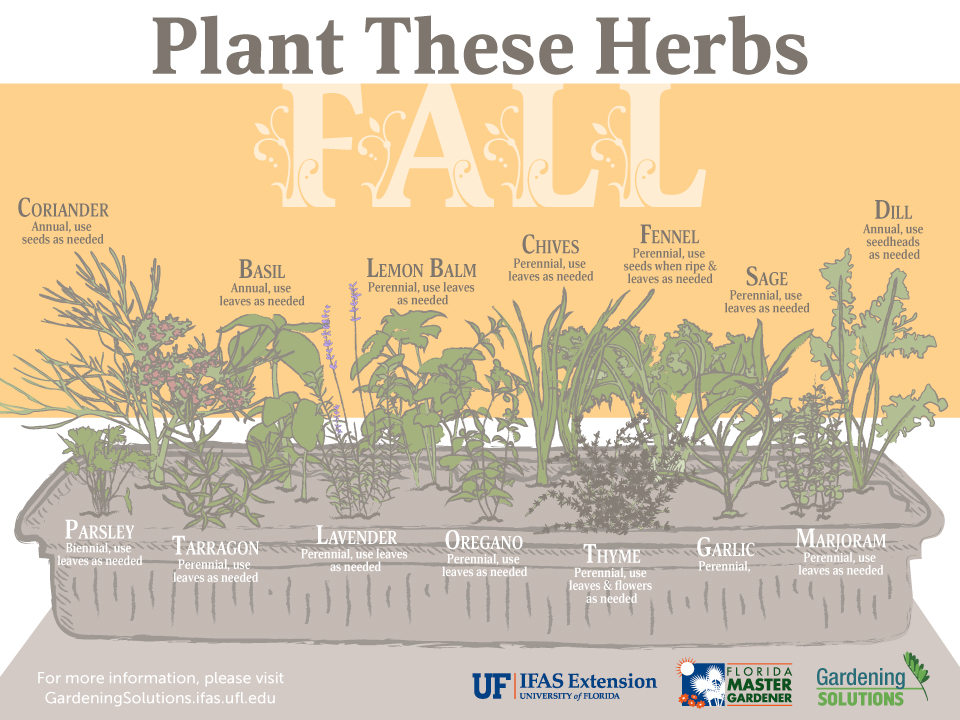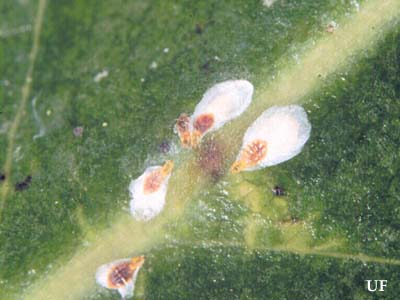
by Matthew Orwat | Jan 27, 2015

The magnolia white scale, Phenacaspis cockerelli, is also called false oleander scale. Image credit http://entomology.ifas.ufl.edu/creatures/orn/scales/false_oleander_scale.htm
Many fruit and ornamental shrubs and trees suffer from scale insects throughout the year. Most of the time home gardeners notice these insects in the spring or summer, because their exudate is the primary substrate for sooty mold growth. Although it seems counter-intuitive, the best time to control scale insects is in late winter. This can be achieved with one or two applications of horticultural oil, often called “dormant oil” in late January and early February.
Horticultural oil has been in use for well over one hundred years. While first only available in dormant oil formulations, it is now available in several types that allow for near year round application. Winter or “dormant” oils are heavier in weight, so they take longer to dissipate. Therefore, they cover pests for longer periods of time and are highly effective. All-season oils are purer, lighter and mixed with an emulsifier. This ensures that it will mix with water well and not damage the plant when exposed to warm, high-light conditions.
Horticultural oils are effective on soft-bodied insects and their eggs. Although scale insects often have a hard outer covering, they are considered soft-bodied. In addition to scale, mealybugs, aphids and spider mites are affected. These oils work primarily by smothering the insect and/or their eggs. Thus when oils are used, they block the insect’s ability to breathe.
Dormant oil is not a cure-all. It does not last very long, therefore the insect must be present for it to work. Additionally, it may kill beneficial insect eggs, so only use when a pest is present and do not apply to areas where infestations are not known. Make sure to cover the underside of the leaves and stems with spray.
Before applying dormant oils read the product label carefully. Any sensitive plants will be listed and temperature limitations will be noted.
Dormant oil is commonly used to control pests on these plants:
- Fruit trees in the Rosaceae (Pear, Apple, Peach, Plum, Nectarine, Blackberry)
- Roses
- Camellia (when not in bloom)
- Magnolia
- Gardenia
- Blueberry
- Crapemyrtle
- Dogwood
- Citrus
- Many others
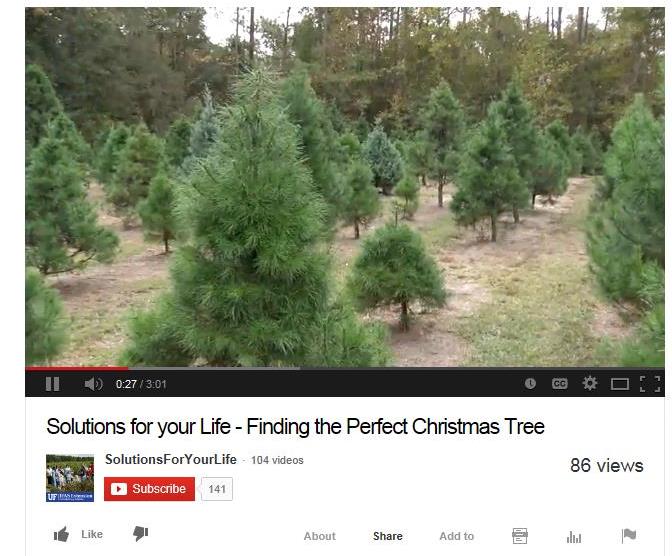
by Matthew Orwat | Dec 9, 2014
Looking for the perfect Christmas tree to celebrate your Holidays? Join Wendy Wilber, UF/IFAS Extension Alachua County Environmental Horticultural Agent, as she offers tips on finding and preserving your fresh-cut Christmas tree throughout the Holiday Season.

by Matthew Orwat | Nov 18, 2014
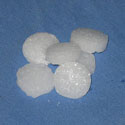
Many homeowners and gardeners think of mothballs as a quick fix when trying to control indoor pest problems or wildlife incursions. There are problems with using mothballs for this purpose.
Mothballs are made up of Naphthalene. The EPA has the following statement about Naphthalene, the active ingredient in mothballs:
[notice]”Naphthalene is associated with hemolytic anemia, damage to the liver, and neurological damage. Cataracts have also been reported in workers acutely exposed to naphthalene by inhalation and ingestion. Chronic (long-term) exposure of workers and rodents to naphthalene has been reported to cause cataracts and damage to the retina. Hemolytic anemia has been reported in infants born to mothers who “sniffed” and ingested naphthalene (as mothballs) during pregnancy. Available data are inadequate to establish a causal relationship between exposure to naphthalene and cancer in humans. EPA has classified naphthalene as a Group C, possible human carcinogen.” Source: epa.gov website [/notice]
The use of mothballs in gardens or around the house to deter nuisance wildlife is problematic at best; harmful to pets, children and adults at worst. When mothballs are placed outdoors they can contaminate edible garden crops, runoff into ponds, streams and lakes and leach into ground water as a pollutant.
Here are a few things to consider when using moth balls:
-
Outside use of these products is prohibited
-
Applications are limited to an airtight space or well sealed container such as a garment bag.
-
Application locations not listed on the label, and therefore not allowed, include
-
attics
-
walls
-
voids
-
crawl spaces
-
gardens
-
closets
-
plastic garbage bags.
Moth balls are a pesticide and regulated by the U.S. Environmental Protection Agency (EPA) and the Florida Department of Agriculture and Consumer Services (FDACS). Contact information: FDACS (850) 617-7882, National Pesticide Information Center (800) 858-7378, Poison Control Center (800) 222-1222, Florida Department of Health, Bureau of Epidemiology, Pesticide Surveillance Program (800) 606-5810.
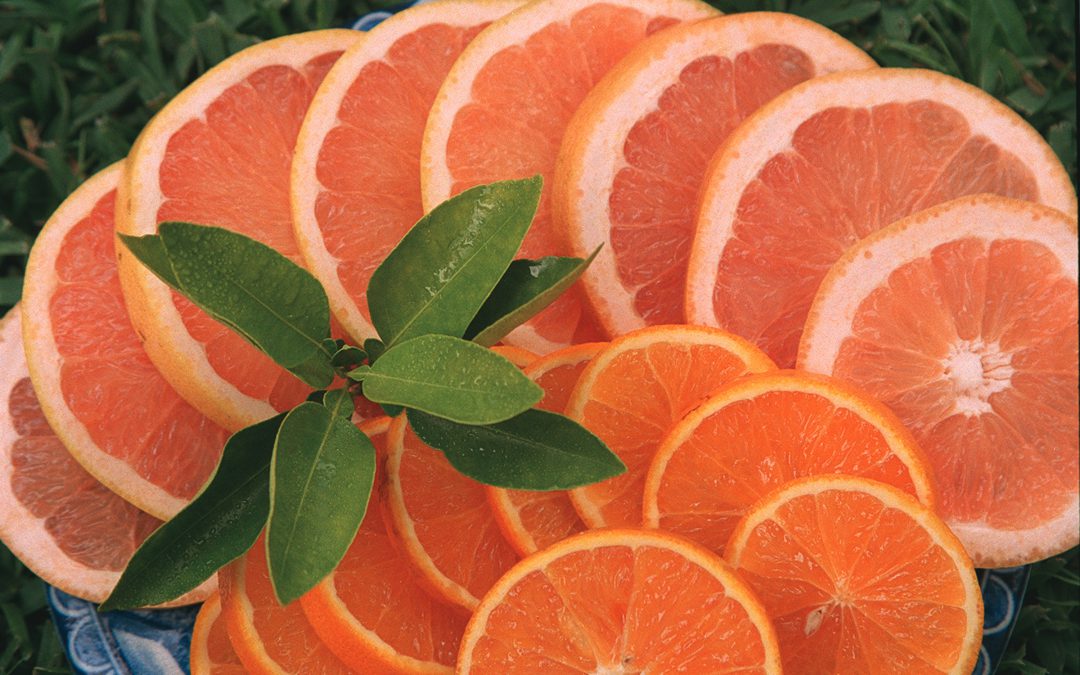
by Matthew Orwat | Nov 17, 2014
Tuesday November 19th and Wednesday November 20th, substantial freezing weather is expected
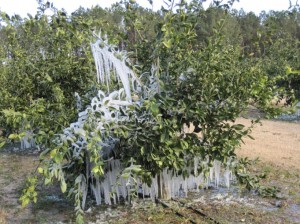
How cold does it have to get before citrus in Northwest Florida needs to be protected? A concrete answer to this question does not exist. Growers and home gardeners alike must consider several factors including type of citrus grown and the location of the citrus.
Below are a few quick facts to assist growers and home gardeners in determining whether to protect or not to protect their citrus:
- Certain citrus trees such as lime, pomelo, grapefruit, sweet orange, lemon and citron will definitely need protection or need to be moved into a sheltered area. Individuals that grow these types on a consistent basis either wrap their trees with protective covers each season or grow them in containers and move them into greenhouses.
- The meyer lemon, which is in reality a lemon-sweet orange hybrid, is a tree that was introduced to the united states in 1908. Mature dormant meyer lemons can be hardy down to 20°F, with fruit hardy to 26°F. Immature trees, or those that have not reached dormancy, should be protected. Covers made of cloth should be large enough to touch the ground so that heat from the soil can help keep the tree warm.
- Generally, satsuma are cold tolerant down to 15° F, but young trees or trees yet to achieve dormancy are usually only tolerant to 26°F. Fruit should not sustain damage from freezing temperatures above 25°F. Extreme winds sometimes make the effects of freeze events worse, so it is always better to err on the side of protection if the trees are planted in an exposed site.
- Kumquats are the most cold tolerant citrus type grown in Northwest Florida, so protection is not required unless freeze events reach 20°F.
Additional facts to assist the grower or home gardener with citrus protection:
- Plant trees on a south-facing slope, south of windbreaks, on the south side of a structure or under a light canopy if possible. South facing slopes block harmful cold winds. Structures offer radiant heat which aids in the protection of citrus trees. Additionally, light over-story pine canopies allow sufficient sunlight through while reducing frost damage.
- Wrap the trunk with commercial tree wrap or mound soil around the base of the tree up to 2 feet. This will protect the graft of the young tree. Thus, if the branches freeze the graft union will be protected.
- Cover the tree with a cloth sheet or blanket. For additional protection, large bulb Christmas lights can be placed around the branches of the tree. This will increase the temperature under the cover by several degrees. Be sure to use outdoor lights and outdoor extension cords to avoid the potential of fire.
- Water citrus trees. Well watered trees have increased cold hardiness. Do not over-water. If the ground is moist, it is not necessary to water.
- Frames may be installed around young trees to hold the cover. This option keeps the blanket or sheet from weighing down the branches.
- For large production areas, micro-irrigation is an option. This practice will protect citrus trees up to 5 feet, but must be running throughout the entire freeze event. For additional information read this publication on micro-sprinkler irrigation.
- Always remember to remove cold protection once the temperature rises so that the trees do not overheat.
- Do not cover trees with plastic tarp, these will not protect the tree and can “cook” the tree once the sun comes out.
For additional information, contact your local extension office.




